Submitted by WA Contents
10 Must-visit Installations at London Design Biennale 2018
United Kingdom Architecture News - Sep 17, 2018 - 03:50 20559 views

The second edition of London Design Biennale has kicked off on September 4, 2018 with a series of immersive installations at Somerset House in London.
After the enormous success of the inaugural 2016 London Design Biennale, this year, over 40 countries and territories are welcomed to the second edition of this prestigious global event, which will be running until September 23, 2018 at Somerset House in London. This year's participant countries include France, Germany, Hong Kong, India, UK and USA. The UK entry is curated for a second time by the V&A.
This year's theme was set as "Emotional States" and over 40 countries have presented their works responding to the theme across the entirety of the site.
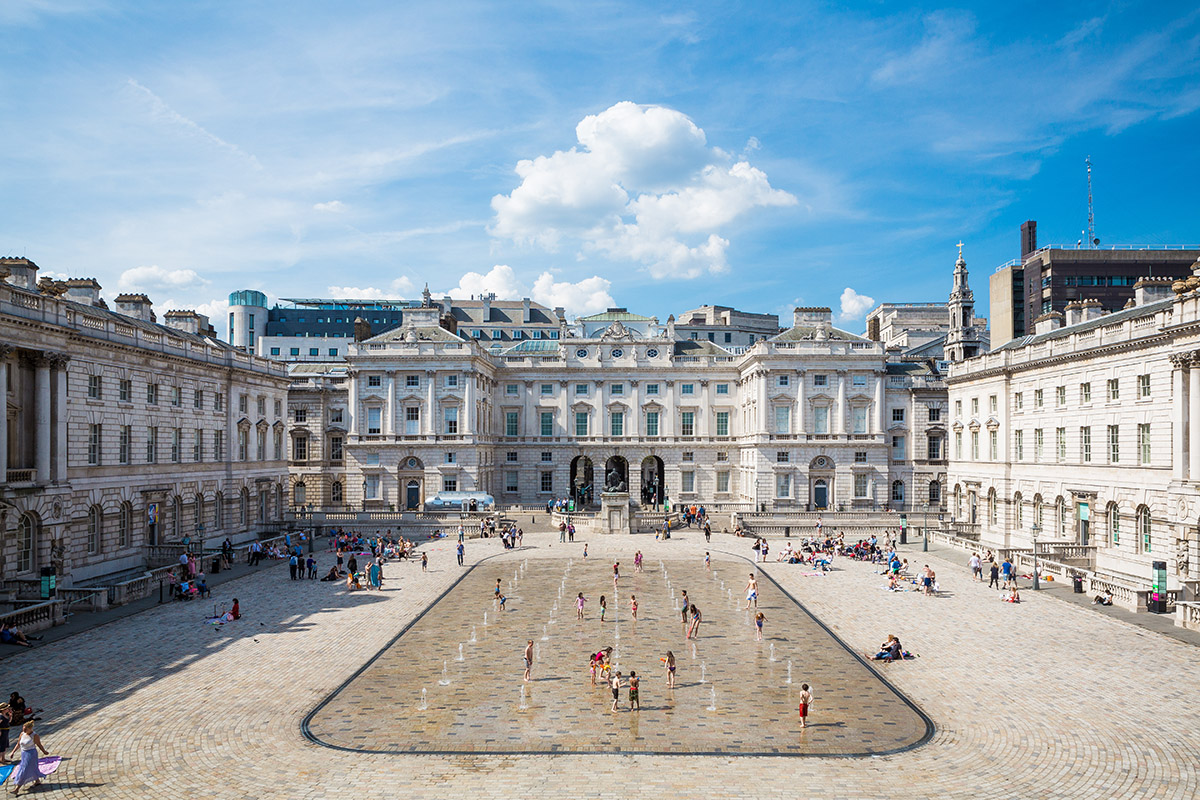
The Edmond J. Safra Fountain Court, Somerset House. Image © Kevin Meredith
A highlight on the global cultural calendar, the Biennale will see some of the world’s most exciting and ambitious designers, innovators and cultural bodies gather in the capital to celebrate the universal power of design and explore the role of design in our collective futures. Taking over the entirety of Somerset House, the exhibition will see the world’s nations presenting newly commissioned works in contemporary design, design-led innovation, creativity and research in response to theme of ‘Emotional States’.
"Emotional States" has been chosen to provoke a broad interpretation across design disciplines, with immersive and engaging installations that interrogate how design affects every aspect of people’s lives – the way we live and how we live – but also influences our very being, emotions and experiences.
Christopher Turner is the Artistic Director of the 2018 London Design Biennale, Turner will be directing the Biennale for the second time this year, following his appointment as Head of Design, Architecture and Digital collections at the Victoria and Albert Museum.
Scroll down to see the 10 must-visit installations at the 2018 London Design Biennale:
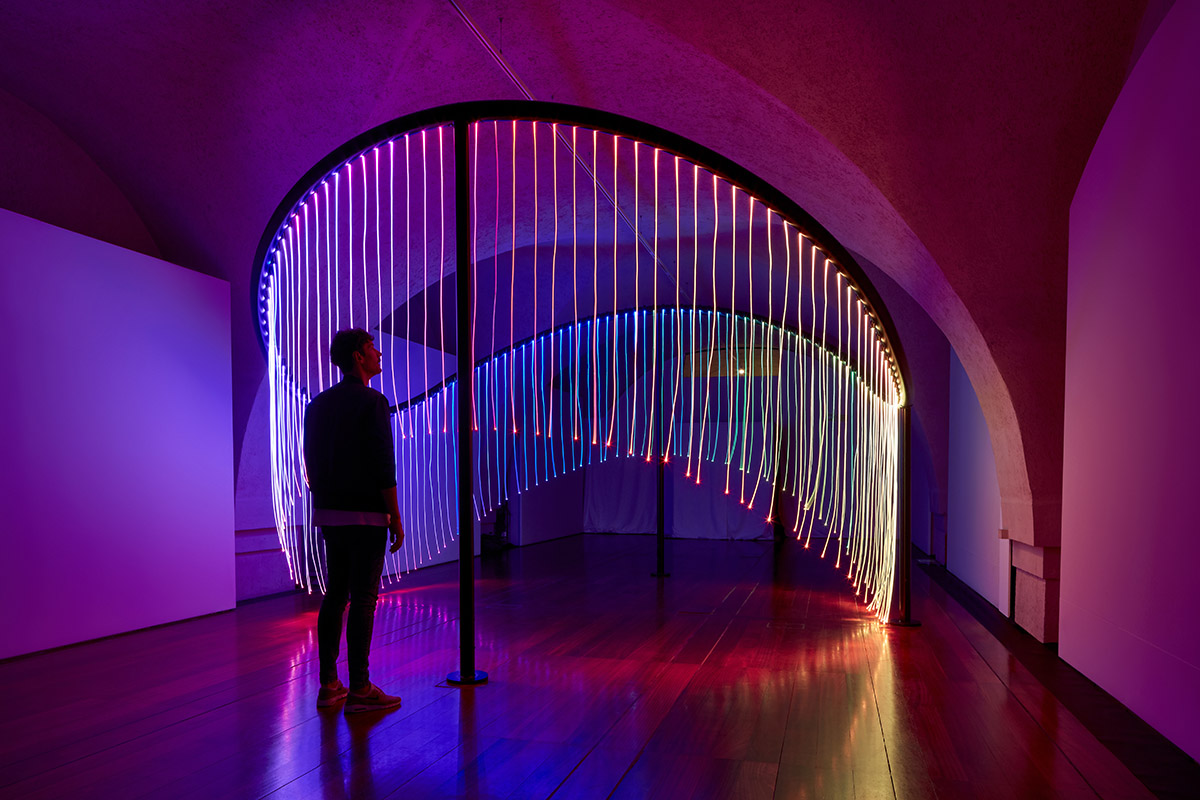
Image © Mark Cocksedge
Australia: Full Spectrum
The installation was designed by Flynn Talbot, the rainbow-colored full spectrum is a celebration of love, inspired by a new spirit of openness in his native country Australia.
The inspiration for Flynn Talbot’s installation came just before Christmas 2017 when, after a decade of bitter debate, Australia became the 26th country to legalise same-sex marriage. The amendment to the Marriage Act followed an unprecedented national postal survey in which 62 per cent of voters approved the law change.
"I was overwhelmed with a sense of pride and a basic love for humanity," Talbot said. "In Australia, there is now a new notion of what love is, and it is tangible in the air."
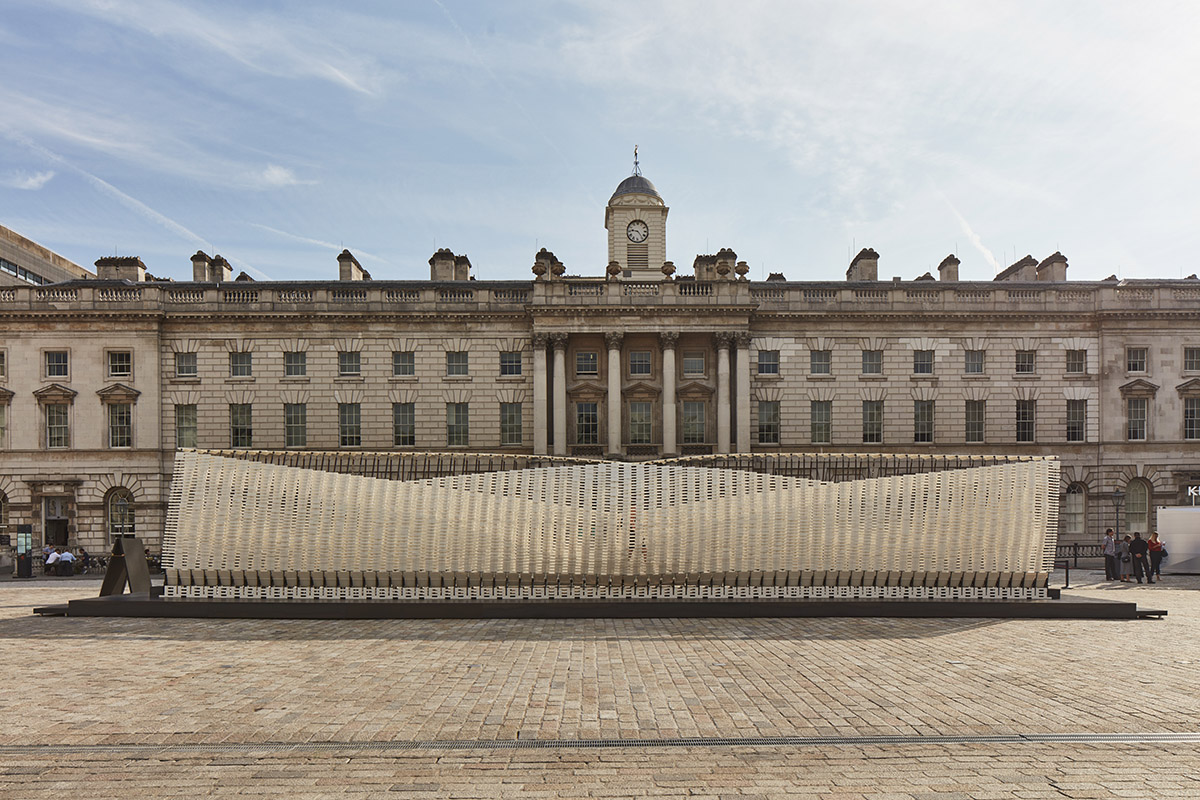
Greece: ΑΝΥΠΑΚΟΗ (Disobedience)
The Disobedience installation was designed, engineered and curated by Studio INI. The concept of ΑΝΥΠΑΚΟΗ (pron. anipakoi) has been used throughout history to describe the Greek temperament, with explorations of disobedience dating back to Ancient Greece and its internationally influential mythology. From the cautionary tales of Ikaros and Antigone, to Prometheus, a hero who feels a moral obligation to disobey the gods in order to create opportunities for human progress. Greece's design explores this duality in the nature of disobedience. How can we design to evoke disobedience yet harness its constructive and creative form?
ΑΝΥΠΑΚΟΗ is comprised of a 17 metre-long wall constructed from a steel spring skeleton built up with recycled plastic which flexes, morphs and breathes around the human body. Visitors can transgress through this mechanical boundary, and as they tread, experience the skin of the wall transforming in response.

Guetemala: Palopò
Palopò was designed by Olivero Bland Studio in Collaboration with Sylvia Denburg - Zyle. Guatemala’s installation tells the story of Pintando Santa Catarina Palopó – an initiative that seeks to transform an impoverished town on Lake Atitlán by essentially turning it into a monumental artwork.
The design efforts were led by Designer Diego Olivero from Olivero & Bland Studio, a team of designers, architects and local leaders have worked with the community to paint the town’s 800 houses using patterns inspired by local textiles. Each family can choose from five colour combinations and a series of stencil designs, all based on the traditional huipil.

Latvia: Matter to Matter
Matter to Matter was designed by Arthur Analts (Variant Studio). In Matter to Matter, Arthur Analts of Variant Studio was inspired by his native city of Riga and its surrounding forests – which cover more than half of the country. Due to its proximity to the Baltic Sea, Riga has its own unique climate, with a constant humidity that often leads to condensation. Analts has recreated this using a large green-glazed surface as an interactive platform for the transition of matter to matter: gas to liquid.
"It will show the existence of nature in our daily lives and hopefully make us re-evaluate the importance of it," said Analts. The installation is a serene, meditative space; a scent of Latvian nature, redolent of the country’s sprawling forests, and a large bench made from the typical trees that grow in Latvia add sensory elements to the continuous glass wall.
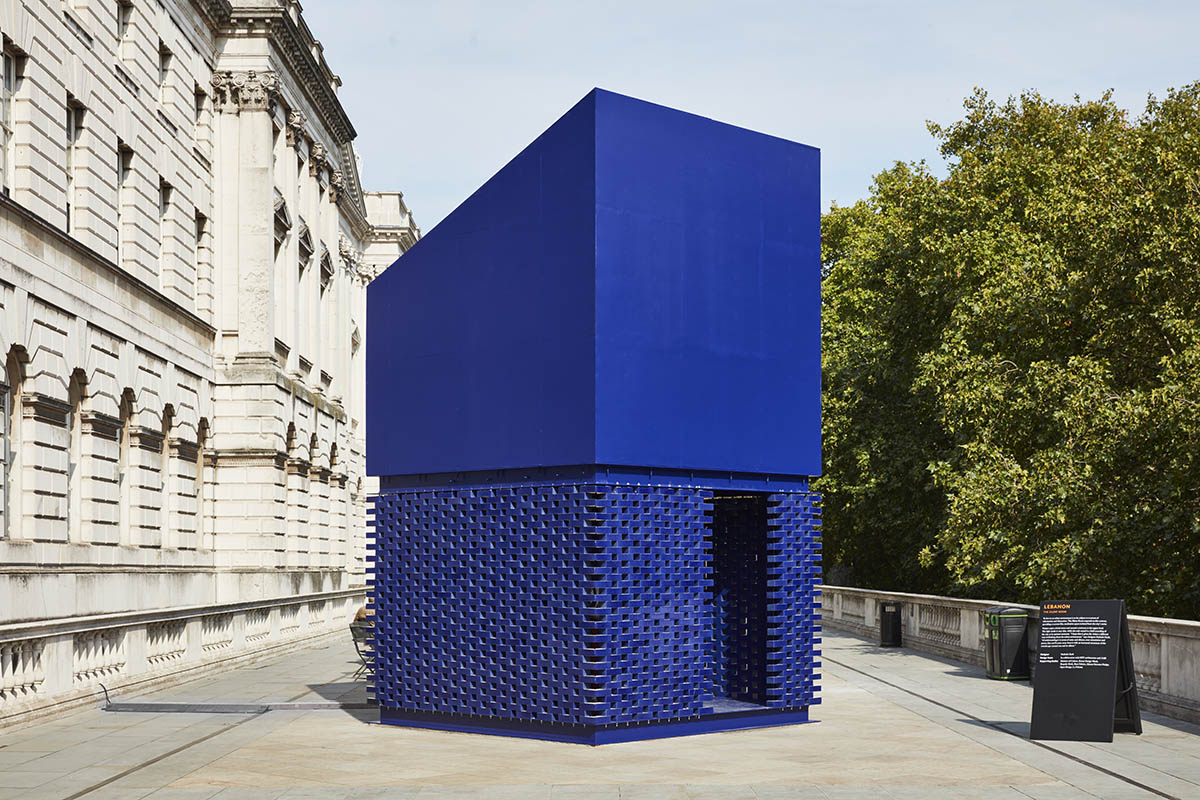
Lebanon: The Silent Room
The Silent Room was designed by a multi-disciplinary scenographer Nathalie Harb. The Silent Room was inspired by Nathalie Harb’s home city of Beirut. Visitors enter a perforated brick and timber tower and ascend a staircase to the wooden upper level, which houses the Silent Room. The light inside is very dim, providing the absolute minimum of visual information.
"Silence is becoming a commodity for the privileged," said designer Nathalie Harb. To live in an urban environment is to be subject to a torrent of information and distraction, while public space is disappearing in a relentless wave of privatisation. The Silent Room responds to this context, providing a cocoon-like space isolated from the city’s noise. "It offers the luxury of silence to everyone, regardless of background or status. It redresses the sonic inequity within the contemporary urban landscape."
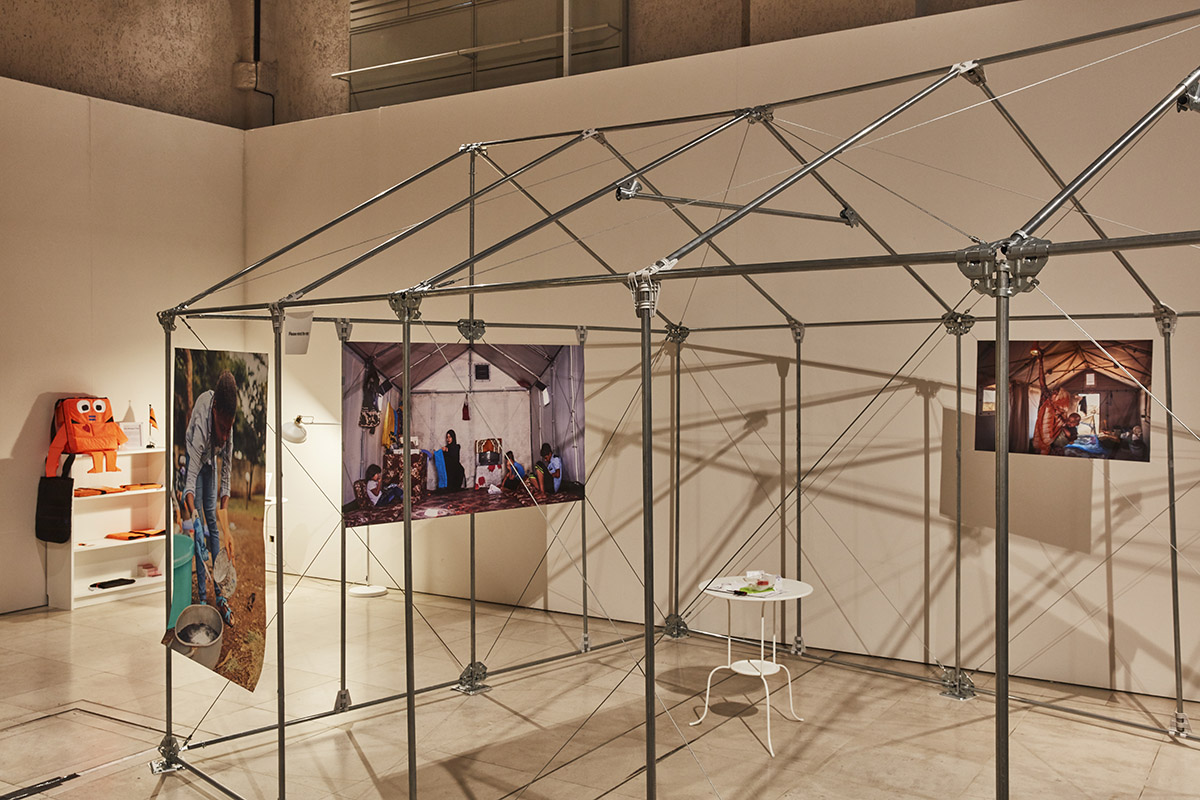
Refugees' Pavilion: Inspiration through Creation
Refugees' Pavilion was designed by Adrian Jankowiak (Afrika Design), Yara Said (Salwa Foundation). The Refugees' Pavilion tells the stories of refugees through objects that they have designed, and one groundbreaking design that has been created to help them and their families. As designers around the world are asked to solve refugees’ problems, Inspiration Through Creation acknowledges the difficulties in overcoming them, such as the fact that houses in refugee camps have to be temporary by design, even if the camps themselves are anything but – some have been around for decades.
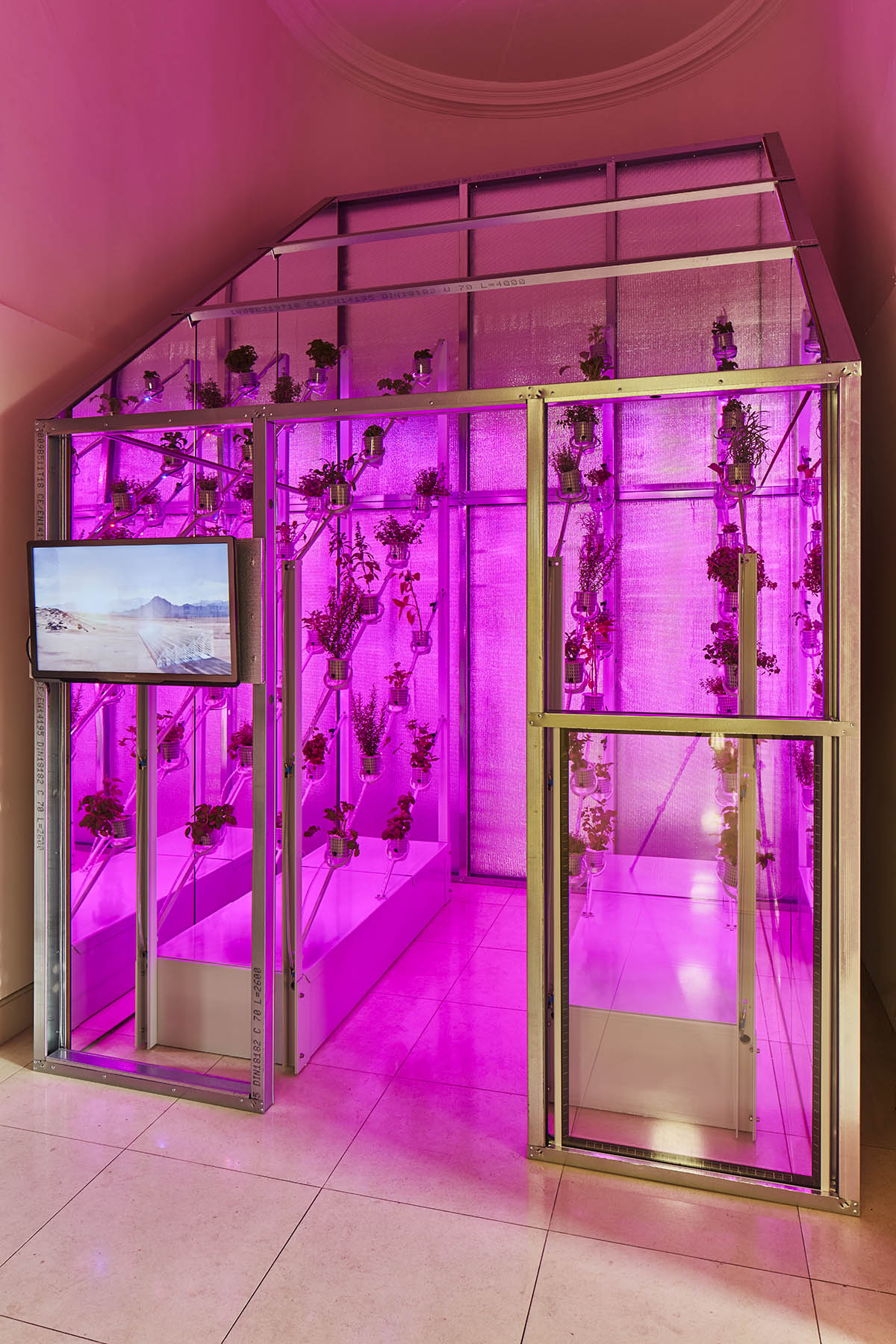
The Netherlands: Power Plant
The installation was designed by Marjan van Aubel, an award-winning solar designer whose innovative practice spans the fields of sustainability, design and technology. Power Plant, the Netherlands’ installation, shows how design offers cause for hope. Visitors enter a greenhouse of the future – a building that harvests both food and the electricity needed to grow it.
Power Plant’s transparent solar glass maintains its indoor climate, enabling year-round growth, while a hydroponic system circulates nutrientenriched water, reducing water use by 90 per cent compared to traditional soil farming. By growing vertically, and by using specifically coloured LEDs in addition to sunlight, plant growth can be increased by up to 40 times.
"We hope to build a Kew Gardens of the 21st century," said designer Marjan van Aubel, "where we celebrate modern technologies and grow the plants of the future."
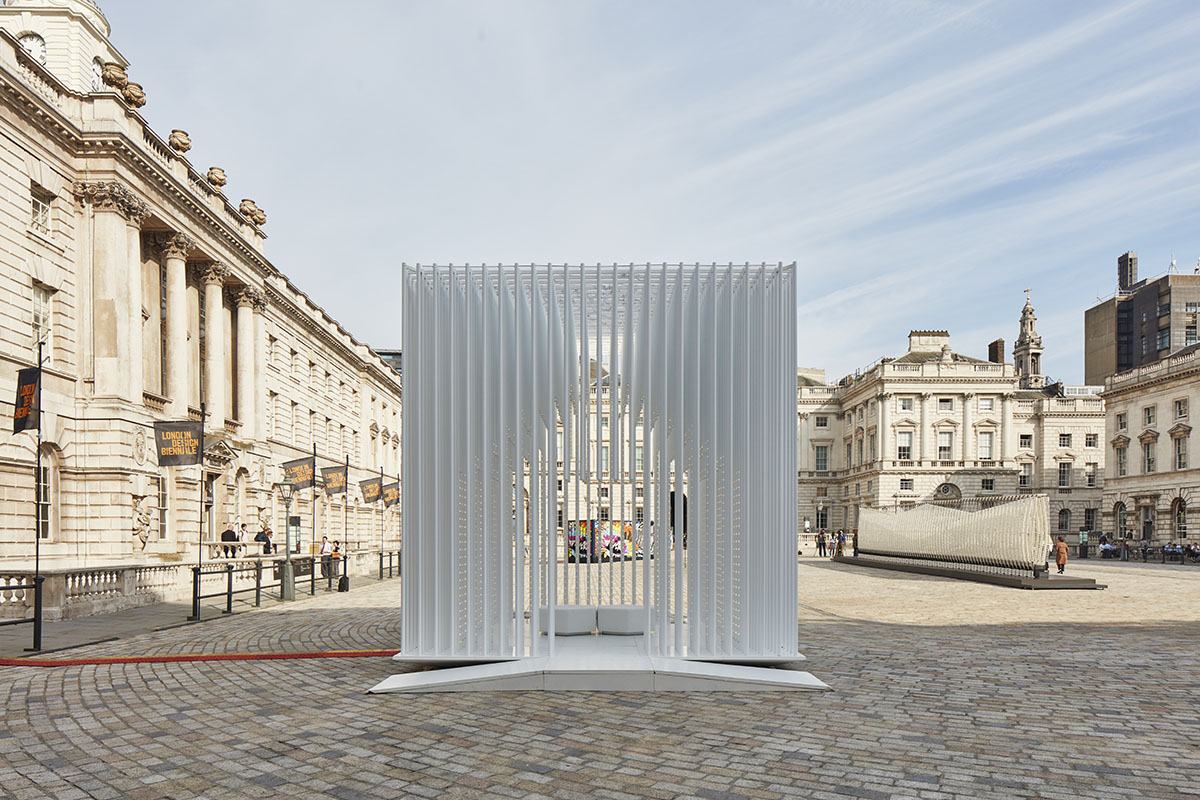
Turkey: housEmotion
housEmotion was designed by Tabanlioğlu Architects. Tabanlıoğlu Architects’ installation considers the emotional meaning of home in an age of increasingly transient living. "There is a variety of perceptions of what home really is today," the practice says. "The question ‘Where are you from?’ prompts myriad answers. The meaning of home for a person may simply be a smartphone with a full memory." Or it may be something more fundamental to our sense of self – Tabanlıoğlu also reference the psychoanalyst DW Winnicott and his groundbreaking work on childhood development, Home is Where We Start From.
Tabanlıoğlu’s pavilion starts with the most elemental idea of a house: a cubic form. This is created using a series of white rods, a simple border demarcating the limits of the home. The gaps between the rods lend a semi-transparency to the structure, drawing visitors in but also allowing the home to dissolve into the wider environment. The walls, perhaps even the home itself, are seen to be illusory.
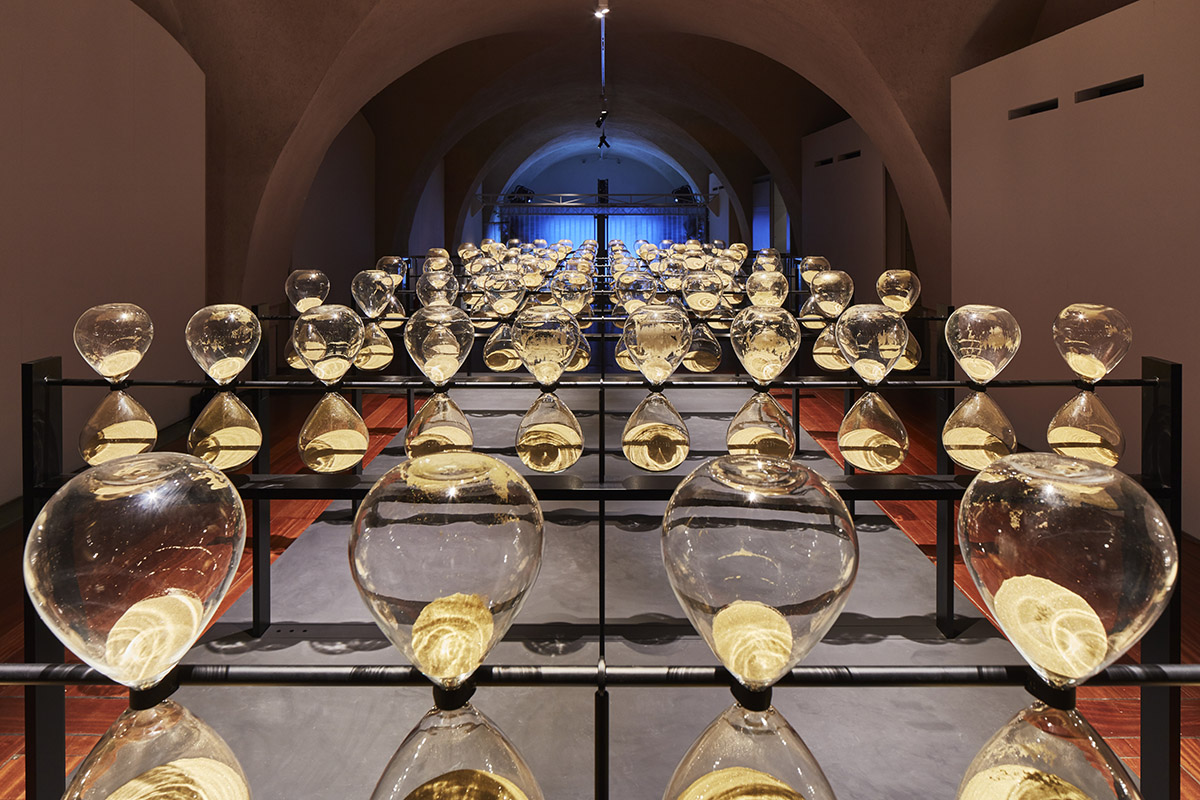
United Arab Emirates: Time is Subjective
The installation was designed by a multidisciplinary firm Tinkah. The change of speeds throughout the 7 Emirates provides the inspiration for the United Arab Emirates’ installation, Time is Subjective. A repetition of hourglasses, arranged in rows appear suspended in mid-air and rotate intermittently. The link to the UAE’s rapid growth is overt: the sand that fills the hourglasses is the UAE’s most ubiquitous material.
The theme of subjective time reflects the designers’ sense of pride in a nation that in less than half a century has transformed vast expanses of desert into an ever-changing urban skyline.
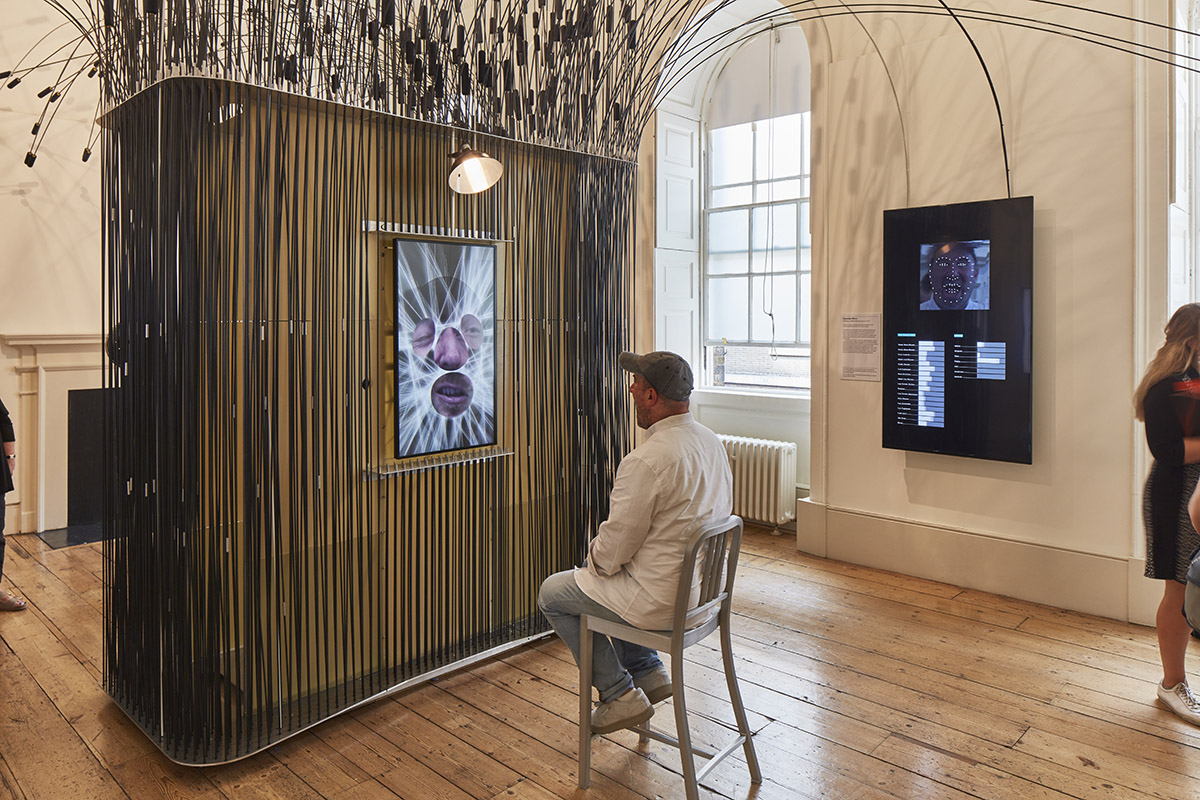
USA: Face Values
The US installation was designed by Zachary Lieberman, R. Luke DuBois, Matter Architecture Practice, Jessica Helfand (Scholar). Face Values engages emotion as a physical performance, inviting visitors to use their facial expressions to control sound and graphic displays.
In Cooper Hewitt’s Face Values installation, live facial data becomes the basis of dynamic graphic images and provocative conversations between humans and machines. Visitors are invited to perform emotions and transform identities by interacting with original digital works by R. Luke DuBois and Zachary Lieberman, framed by a canopy of synthetic reeds designed by Matter Architecture Practice. A visual essay by Jessica Helfand will explore the historical context of facial analysis.
Top image © Mark Cocksedge
All images © Ed Reeve, unless otherwise stated.
> via London Design Biennale
